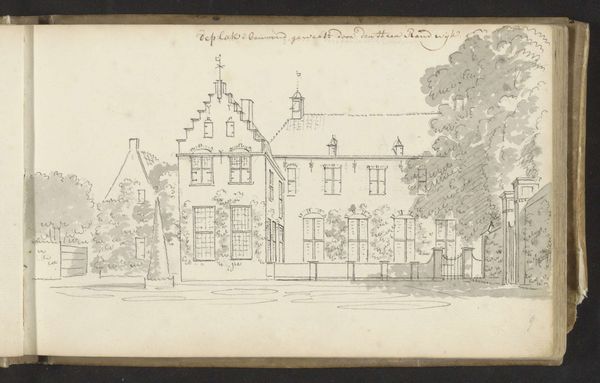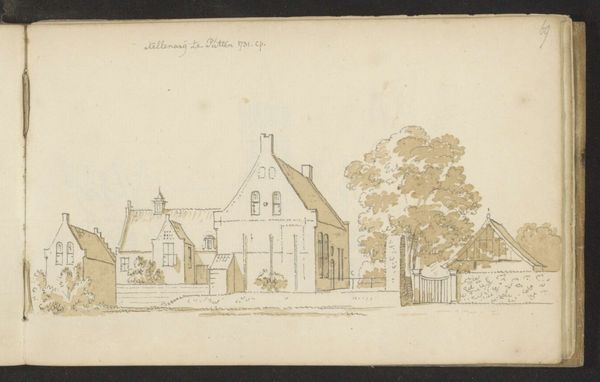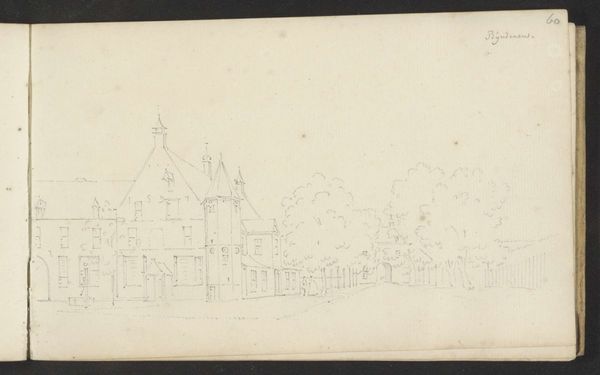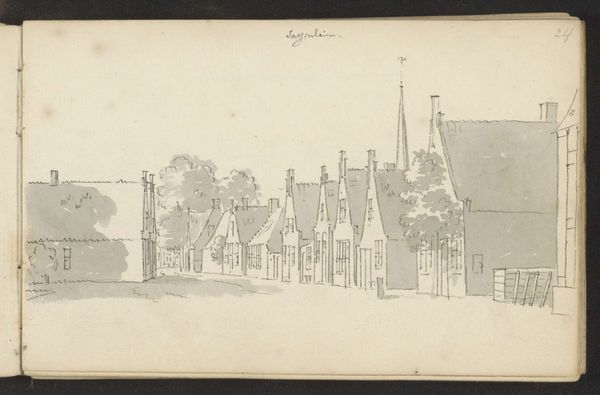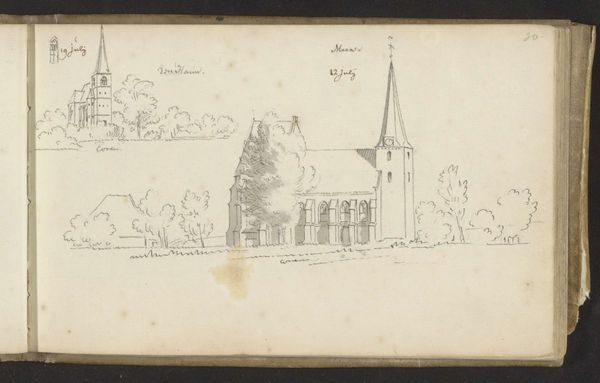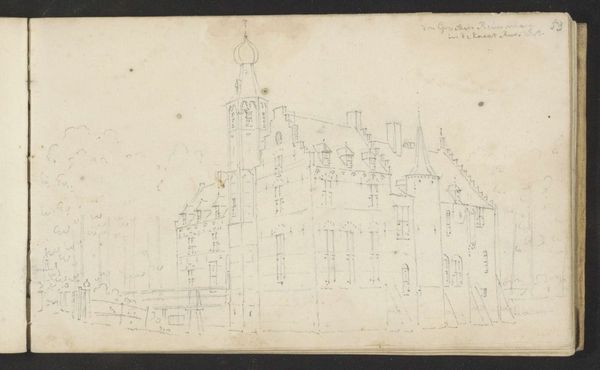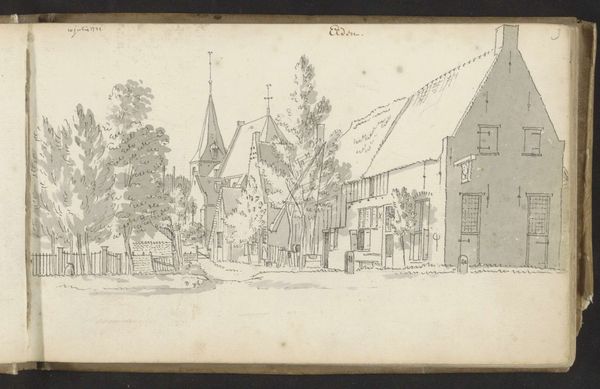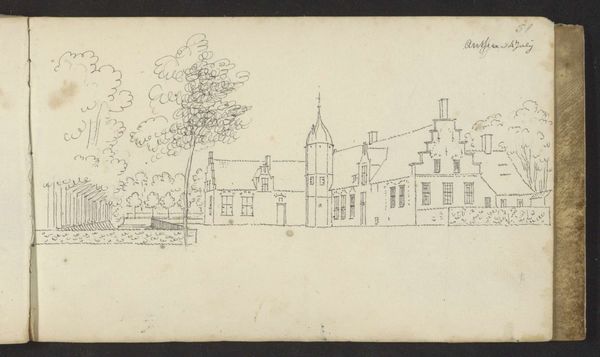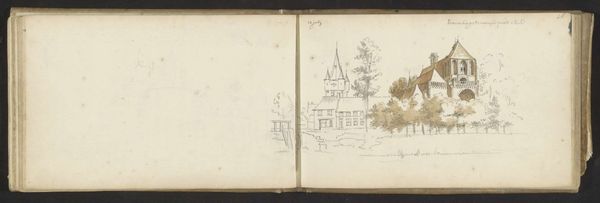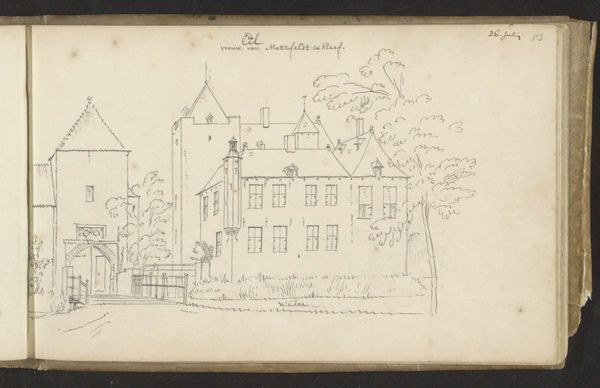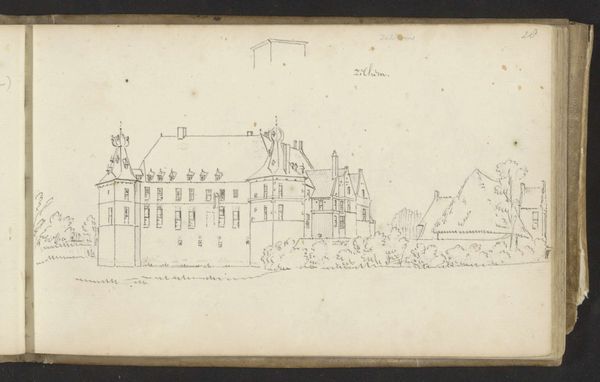
drawing, paper, pencil, pen
#
drawing
#
aged paper
#
dutch-golden-age
#
sketch book
#
hand drawn type
#
landscape
#
paper
#
personal sketchbook
#
sketchwork
#
pen-ink sketch
#
pencil
#
pen work
#
sketchbook drawing
#
pen
#
cityscape
#
storyboard and sketchbook work
#
sketchbook art
Copyright: Rijks Museum: Open Domain
Curator: Here we have Cornelis Pronk’s "Kasteel Keenenburg," a pen, pencil, and ink drawing on paper dating from around 1728 to 1732. Editor: It feels delicate, almost fragile. The muted tones and the fineness of the lines give it a ghostly quality, like a memory fading with time. Curator: Indeed. Pronk was known for his detailed topographical drawings. We can see here an open sketchbook, with the castle rendered across two pages. Consider the context—Pronk's work emerged in a Dutch Republic undergoing significant societal shifts. The decline of its Golden Age impacted the role of the aristocracy. How might the meticulous documentation of grand estates serve to, perhaps, memorialize or even idealize a specific power structure during times of change? Editor: The architectural details are striking. Castles, throughout history, carry immense symbolic weight. They represent power, authority, security, but also isolation. Here, the castle sits rather plainly, almost understated. Is Pronk offering a commentary on the waning influence of these structures? Is he stripping away some of the myth? Curator: I find your suggestion persuasive. We must also consider Pronk’s intentions. He aimed to accurately record, but accuracy isn’t devoid of interpretation. The very act of choosing to depict this subject implies a perspective. What aspects did he choose to highlight? Which details are emphasized or omitted? It begs the question of what narratives are subtly embedded in seemingly objective portrayals of places and buildings. Editor: And think of the personal element, too—the "sketchbook" quality, as if we're privy to the artist’s private observations, invites a sense of intimacy, allowing us to feel more deeply connected with both the artist and the subject of his sketch. The blank space around the sketch lends a modern feel, too, so simple in its depiction. Curator: Absolutely, it humanizes both the artist and subject. By situating this piece within its historical, political, and social contexts, we can begin to see its potential to prompt reflections on representation and ideology. Editor: This has shifted my understanding; it’s more than just a pretty castle on a page. Curator: Precisely. Let us now move on to...
Comments
No comments
Be the first to comment and join the conversation on the ultimate creative platform.
